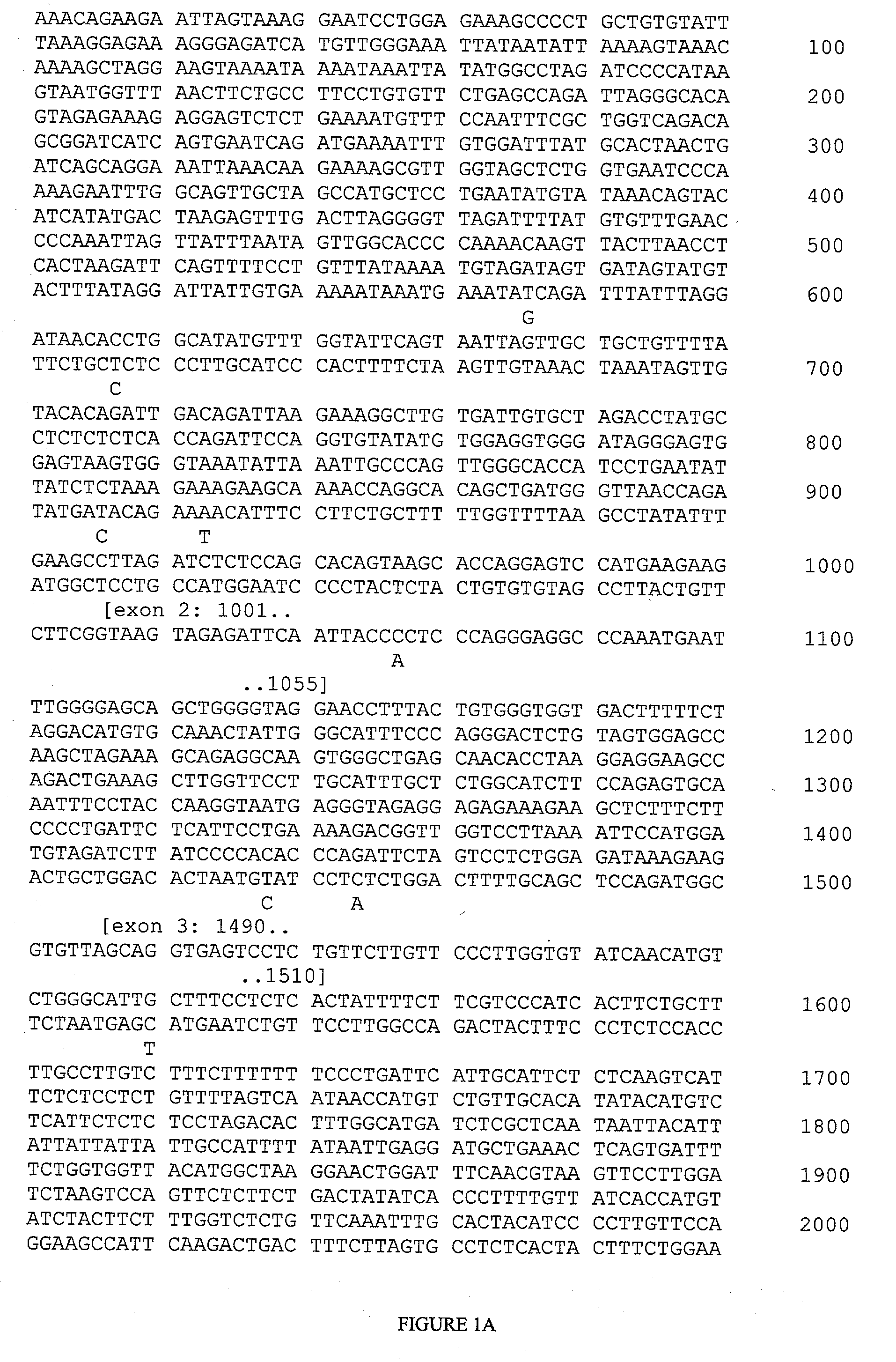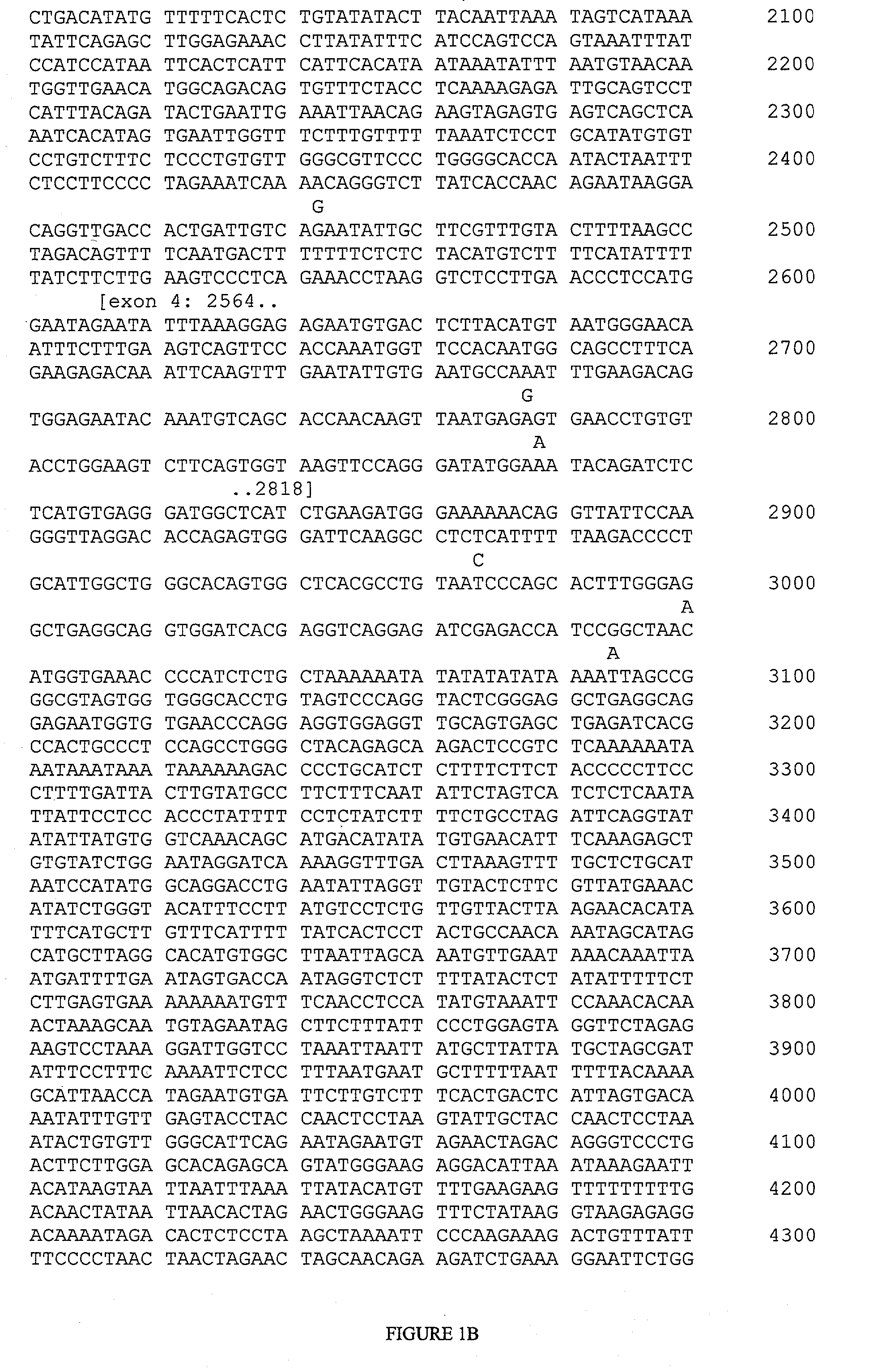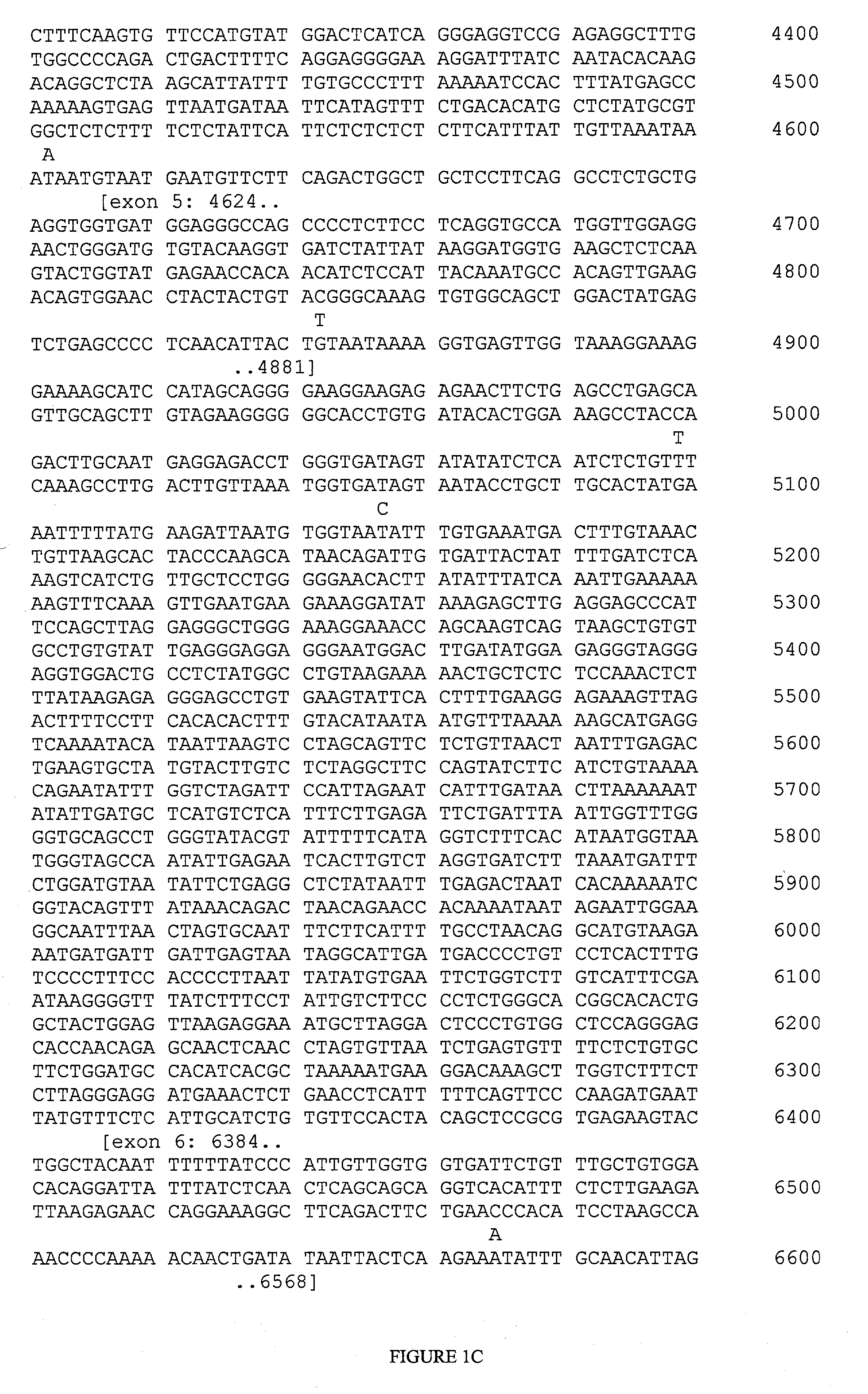Haplotypes of the FCER1A gene
a gene and haplotype technology, applied in the field of haplotypes of the fcer1a gene, can solve the problems of natural genetic variability between individuals, drug efficacy is often lower, and it is difficult to consider, so as to reduce the potential for bias and improve efficiency and reliability.
- Summary
- Abstract
- Description
- Claims
- Application Information
AI Technical Summary
Benefits of technology
Problems solved by technology
Method used
Image
Examples
example 1
[0149] This example illustrates examination of various regions of the FCER1A gene for polymorphic sites.
Amplification of Target Regions
[0150] The following target regions of the FCER1A gene were amplified using PCR primer pairs. The primers used for each region are represented below by providing the nucleotide positions of their initial and final nucleotides, which correspond to positions in SEQ ID NO:1 (FIG. 1).
PCR Primer PairsPCRFragment No.Forward PrimerReverse PrimerProductFragment 1319-341complement of 1138-1113820 ntFragment 2748-769complement of 1221-1199474 ntFragment 3788-810complement of 1331-1306544 ntFragment 41319-1342complement of 1709-1684391 ntFragment 52351-2372complement of 2919-2897569 ntFragment 62553-2576complement of 3067-3045515 ntFragment 74359-4382complement of 4932-4910574 ntFragment 84527-4548complement of 5177-5157651 ntFragment 96200-6221complement of 6926-6901727 ntFragment 106423-6444complement of 7073-7050651 nt
[0151] These primer pairs were used...
example 2
[0154] This example illustrates analysis of the FCER1A polymorphisms identified in the Index Repository for human genotypes and haplotypes.
[0155] The different genotypes containing these polymorphisms that were observed in unrelated members of the reference population are shown in Table 4 below, with the haplotype pair indicating the combination of haplotypes determined for the individual using the haplotype derivation protocol described below. In Table 4, homozygous positions are indicated by one nucleotide and heterozygous positions are indicated by two nucleotides. Missing nucleotides in any given genotype in Table 4 were inferred based on linkage disequilibrium and / or Mendelian inheritance.
TABLE 4(Part 1).Genotypes and Haplotype PairsObserved in the IGERA GenePolymorphic SitesGenotypeHAPPSPSPSPSPSPSPSPSPSPSPSNumberPair1234567891011111TCTACTCCAAG212TC / TTACTCCAAG313TC / TTACTCCAAG414TCT / CACTCCAAG515T / GCTACTCCAAG617TCTACTCC / TAA / GG7111T / GCTACT / CCCAAG8112TCTACTCCAAG9115TCTACTC / AC / TA...
PUM
| Property | Measurement | Unit |
|---|---|---|
| Fraction | aaaaa | aaaaa |
| Molar density | aaaaa | aaaaa |
| Molar density | aaaaa | aaaaa |
Abstract
Description
Claims
Application Information
 Login to View More
Login to View More - R&D
- Intellectual Property
- Life Sciences
- Materials
- Tech Scout
- Unparalleled Data Quality
- Higher Quality Content
- 60% Fewer Hallucinations
Browse by: Latest US Patents, China's latest patents, Technical Efficacy Thesaurus, Application Domain, Technology Topic, Popular Technical Reports.
© 2025 PatSnap. All rights reserved.Legal|Privacy policy|Modern Slavery Act Transparency Statement|Sitemap|About US| Contact US: help@patsnap.com



